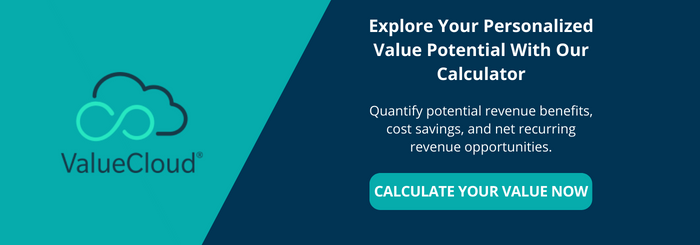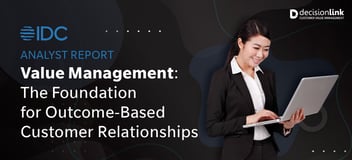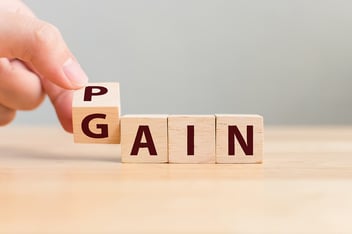How to Calculate and Manage Your Customer Retention Cost

Companies track a lot of metrics, including customer acquisition costs (CAC), customer lifetime value (CLV), and monthly recurring revenue (MRR). While these are all important to measure, one metric that often gets overlooked is the customer retention cost (CRC).
Knowing how much you are spending to keep customers and attract repeat business is essential as loyal customers are crucial to success and profitability.
This article will help you understand the importance of customer retention costs, teach you how to calculate your CRC, and explain some effective strategies for reducing your costs.
What Is Customer Retention Cost?
Customer retention cost (CRC) is what you spend to retain current customers and get them to continue to do business with you.
These costs include everything that goes into customer retention, such as:
- Customer service
- Customer success
- Marketing and remarketing
- Training
- Tech
- Anything else you use to engage and retain existing customers
Why Customer Retention Cost Matters
It’s tough enough to get new customers, but once you get them, you need to keep them!
When You Have a Strong Customer Retention Rate
You’re probably familiar with the Pareto Principle and how it applies to business (even if you didn’t know its formal name). It’s also known as the 80/20 rule, stating that 80% of a company’s profits likely come from about 20% of its customers.
That 20% is typically made up of your most loyal customers that continue to spend with your brand. While you always want to grow your customer base, improving your customer retention rate and reducing your churn rate from existing customers is most effective for your bottom line.
Why Calculate Customer Retention Cost
Loyal customers buy more often and spend more money than new customers. A famous study done by Bain & Company showed that just a 5% increase in customer retention rates can boost company profit between 25% and 95%.
Measuring customer retention costs is essential for making sure you are spending the right amount to keep current customers and build repeat business.
Customer Retention Cost (CRC) vs. Customer Acquisition Cost (CAC)
It’s important to know the differences between CRC and CAC.
CRC
Customer acquisition cost (CAC) is about how much you spend to acquire a new customer. It includes the cost of your marketing and sales efforts to get the first sale. This includes items such as:
- Sales and marketing staff costs
- Paid advertising spend
- Website development and maintenance
- Content marketing and other inbound marketing strategies
CAC
The CAC formula takes the cost of acquiring new customers and divides it by the number of new customers to determine your CAC rate. This will determine your average cost to acquire a new customer.
CRCs focus on everything you do after the sale to keep current customers. For businesses to be successful, they must manage both the cost of customer retention versus customer acquisition to maintain healthy profit margins.
Next, here’s how to calculate your customer retention cost.
Customer Retention Metrics: Calculating Customer Retention Cost
The customer retention cost formula itself is fairly straightforward:
Customer Retention Cost = Amount Spent on Customer Retention/Number of Active Customers
The challenging part of the equation is defining and adding up which cost will be allocated to your total amount spent on customer retention. For example, how much of your marketing and sales staff costs are allocated to customer retention vs. customer acquisition? The lines can blur. It’s most important to decide on an allocation you are comfortable with and keep it consistent over time for accurate tracking and trending.
With the amount spent on customer retention, most companies include items such as:
- Staff costs for customer service, customer success, and account management
- Marketing costs focused on customer retention
- Customer loyalty programs
- Training and onboarding
- Tech and platform costs, such as CRM
Another variable in the formula is time. You can track the number of active customers for any duration, such as a month or a year. Many companies will use the number of active customers annually but track it against monthly expenses.
Retention Rate vs. Churn Rate
CRC is different than customer retention rates (CRR).
CRR
CRR calculates the number of customers you retain but does not focus on costs. CRR is the flipside of the churn rate.
Churn Rate
Churn happens when customers stop using your products or services and is generally considered a key metric to gauge customer satisfaction. CRR and churn have an inverse relationship, so if your retention rate is 90%, your churn rate for the same period is 10%.
Customer Retention Solutions: How to Improve Customer Retention Rate
Your customer retention tactics can vary widely depending on your business, cost of sale, and other factors. However, at the center of your strategy is providing exceptional customer service and support. Without a commitment to these fundamentals, your other efforts to retain customers will likely fall short.
Here are some of the more common — and effective — strategies companies use to improve customer retention rates.
Enhanced Onboarding Experiences
When a B2B customer makes a purchase, it’s an opportunity to interact with them and make them feel special. Whether you provide a personalized thank you, additional resources to maximize their purchase, or let them know you’re ready to help, the way you onboard new customers can go a long way toward retaining them.
This can also help provide affirmation to customers that they made a good decision and reinforce the value you provide.
Price Incentives for Returning Customers
Discounts, coupon codes, or special offers to existing customers have become a staple of B2C marketing, but work effectively for B2B as well.
Creating Active Brand Communities
Online forums and user groups are a great way to gather product feedback and keep customers updated on new products and product launches. It also gives you a way to interact one on one with customers. Active communities breed loyalty by providing support and connecting customers with other B2B users.
Cross-Selling and Upselling
Tracking customer purchasing and behavior allows you to offer cross-sell and upsell opportunities. Successful eCommerce companies, for example, will showcase recommended items based on past purchases or offer compatible products as a bundle. This works for B2B companies, too.
Following Up
Improving your follow-up process can help you unlock the potential for customer retention and grow customer lifetime value. Post-sale customer surveys and regular touchpoints can help you find weaknesses that could create churn and remind customers about your brand.
Ways to Decrease Your Customer Retention Cost
Value realization is the key to customer success. When B2B customers truly understand the unique value your products or services provide, they’re more likely to be customers for life. DecisionLink ValueCloud® helps you align your marketing, sales, customer success, and product teams to deliver value throughout the entire customer lifecycle.
From the first touchpoint, throughout the sales cycle, and continuing post-purchase, DecisionLink helps you optimize every opportunity to grow and retain customers. Continually demonstrating and reinforcing value can improve retention rates and reduce customer retention costs. You can also get an early warning when customers show signs that they are at risk of churning.
DecisionLink ValueCloud® enables the entire Customer Journey from Attract to Advocate through a group of tightly integrated applications.

 ValueCloud
ValueCloud
.png?width=118&height=76&name=Rectangle%20(3).png) ValueCloud Ignite
ValueCloud Ignite
.png?width=92&height=92&name=Rectangle%20(4).png) Free Assessment
Free Assessment
.png?width=100&height=100&name=Rectangle%20(5).png) Watch a Demo
Watch a Demo
.png?width=82&height=96&name=Rectangle%20(6).png) Value Calculator
Value Calculator

.png?width=62&height=51&name=Group%2010%20(1).png) Marketing
Marketing
 Sales
Sales
 Customer Success
Customer Success
 Engage Prospects
Engage Prospects
 Win Deals Faster
Win Deals Faster
 Retain Customers
Retain Customers
.png?width=62&height=62&name=Rectangle%20(8).png) Adopt and Scale
Adopt and Scale
.png?width=54&height=54&name=Rectangle%20(9).png) Cybersecurity
Cybersecurity
 Healthcare
Healthcare
.png?width=54&height=54&name=Rectangle%20(10).png) IT & Software
IT & Software




